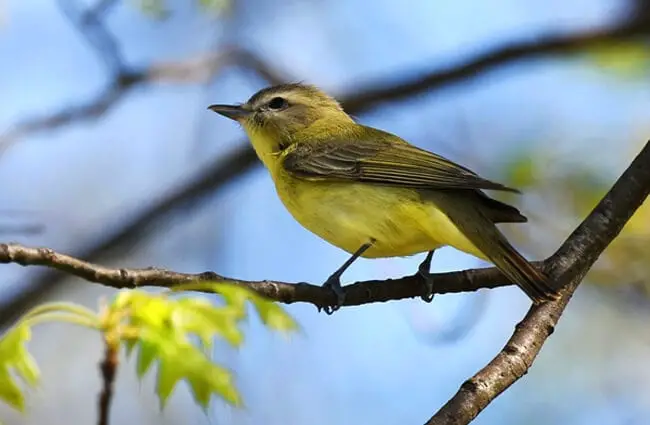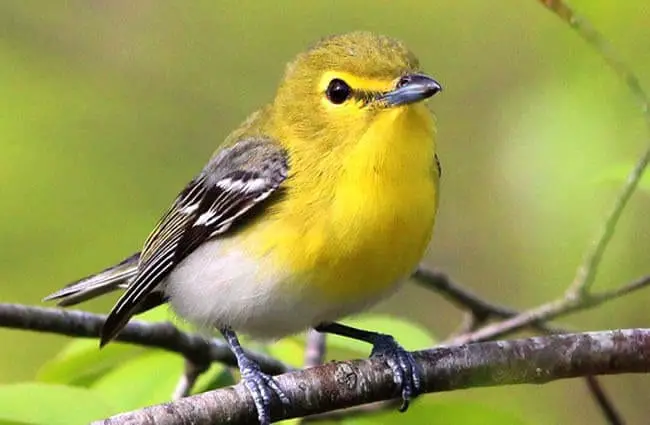The world of birds is filled with diversity, but within that diversity, certain families stand out for their subtle beauty and ecological importance. The Vireonidae, commonly known as vireos, are a prime example. Often overlooked due to their unassuming plumage and preference for the canopy, these small insectivorous birds play a vital role in forest ecosystems. This article delves into the captivating world of vireos, exploring their natural history, behavior, and ecological significance.
What are Vireos?
Vireos are a family of small perching birds, ranging in size from about 13 to 18 centimeters. They are found primarily in the Americas, extending from Canada and the United States through Central and South America. The name “vireo” comes from the Latin word for “green,” an appropriate descriptor for many species given their olive‑green or olive‑gray coloration. However, coloration varies considerably among the roughly 50 recognized species, with some exhibiting striking contrasts of white, yellow, and black.

Distinguishing vireos can be challenging. They often forage high in trees, and their songs, while complex and varied, can be similar across species. A key characteristic is their habit of “flycatching” – not in the acrobatic style of some other insectivorous birds, but by sallying forth from a perch to snap up insects in mid‑air or gleaning them from leaves and branches.
Identifying Vireos
While subtle, key features aid in identification. Look for a relatively stout bill, often with a slight hook at the tip, well suited for capturing insects. Many species exhibit a noticeable dark line through the eye, and some have distinctive wing bars or throat patches. Learning their songs is often the most reliable identification method, as each species possesses a unique vocal repertoire.
Habitat and Distribution
Vireos are predominantly found in woodlands, forests, and thickets. Their habitat preferences vary depending on the species. Some, like the Blue‑headed Vireo, prefer deciduous forests, while others, such as the Yellow‑green Vireo, inhabit tropical rainforests. Still others are adaptable and can be found in suburban gardens and parks, provided there is sufficient foliage for cover and foraging. Their range spans from the boreal forests of Canada and Alaska to the lush rainforests of the Amazon basin and the cloud forests of the Andes.
Evolutionary History
The evolutionary history of vireos remains a topic of ongoing research. Genetic studies suggest that the family originated in the Neotropics and subsequently diversified and expanded into North America. The earliest vireo ancestors likely resembled other insectivorous passerines, gradually evolving specialized foraging adaptations and exploiting forest habitats. This relatively recent diversification indicates that vireos have been particularly successful at adapting to changing environmental conditions.
Diet and Foraging Behavior
Vireos are almost exclusively insectivorous. Their diet consists of a wide variety of insects, caterpillars, aphids, and other small invertebrates. They are opportunistic feeders, taking advantage of seasonal abundance. During the breeding season, caterpillars often comprise a significant portion of their diet, providing essential protein for growing chicks. Their foraging behavior is characterized by a slow, deliberate style, often gleaning insects from foliage or catching them in mid‑air. They will also investigate bark crevices and branches for hidden prey.

Reproduction and Life Cycle
Vireos are generally monogamous, forming long‑term pair bonds. They typically breed during the spring and summer months. Nests are built by both parents and are usually cup‑shaped structures made of plant fibers, spider webs, and other materials. They are suspended from branches, often well‑concealed within foliage. The female lays a clutch of three to five eggs, which are incubated for about twelve to fourteen days. Both parents participate in feeding the chicks, which fledge (leave the nest) after about ten to twelve days. Young vireos remain dependent on their parents for several weeks after fledging, learning essential foraging skills and avoiding predators.
Ecological Role and Interactions
Vireos play a significant role in forest ecosystems. As insectivores, they help control populations of potentially damaging insects, contributing to forest health. They also serve as prey for larger birds of prey and mammalian predators. Some vireo species exhibit unique interactions with other animals. For example, certain species are known to follow mixed‑species flocks, benefiting from increased vigilance against predators and access to foraging opportunities. Vireos also contribute to seed dispersal by occasionally consuming fruits and berries.
Vireos and Humans
Vireos generally have a limited direct impact on human activities. However, their presence is often considered an indicator of forest health. Habitat loss and degradation pose the greatest threats to vireo populations. Conservation efforts focused on protecting and restoring forest habitats are essential for ensuring their long‑term survival. Birdwatchers and nature enthusiasts can contribute by supporting conservation organizations and practicing responsible birding etiquette.

Observing Vireos in the Wild
Finding vireos requires patience and a keen ear. Focus your search in forested areas, especially during spring and summer. Listen for their distinctive songs, which are often described as warbling, chattering, or buzzing. Scan the canopy for small, olive‑green or gray birds flitting among the leaves. Bring binoculars to aid in identification. Respect their habitat by minimizing disturbance and avoiding nesting areas.
Captive Care of Vireos
Keeping vireos in captivity is generally discouraged, as they require specialized care and have complex behavioral needs. However, in cases where captive care is necessary (e.g., for rehabilitation purposes), the following considerations are essential: provide a large aviary with dense foliage for cover, offer a varied diet of insects and fruit, and simulate natural light and temperature cycles. Avoid overcrowding and minimize human interaction to reduce stress. Consult with experienced avian veterinarians and keepers for guidance.
Fun Facts about Vireos
- Some vireo species are known for their remarkable endurance, undertaking long‑distance migrations between breeding and wintering grounds.
- Vireos are often able to detect subtle changes in insect populations, making them potential indicators of environmental health.
- Their nests are often constructed with spider webs, providing both strength and elasticity.
- Certain vireo species exhibit a unique “wing‑fluttering” display during courtship.

Concluding Thoughts
Vireos, though often overlooked, are vital components of forest ecosystems. Their subtle beauty, complex behavior, and ecological importance deserve greater recognition. By understanding and appreciating these fascinating birds, we can contribute to their conservation and ensure their continued presence in the natural world. Their role as insectivores, seed dispersers, and indicators of environmental health highlights their critical contribution to the delicate balance of forest life.



![Red Angus Closeup of a beautiful Red Angus cowPhoto by: U.S. Department of Agriculture [pubic domain]https://creativecommons.org/licenses/by/2.0/](https://animals.net/wp-content/uploads/2020/03/Red-Angus-4-238x178.jpg)




![Red Angus Closeup of a beautiful Red Angus cowPhoto by: U.S. Department of Agriculture [pubic domain]https://creativecommons.org/licenses/by/2.0/](https://animals.net/wp-content/uploads/2020/03/Red-Angus-4-100x75.jpg)

